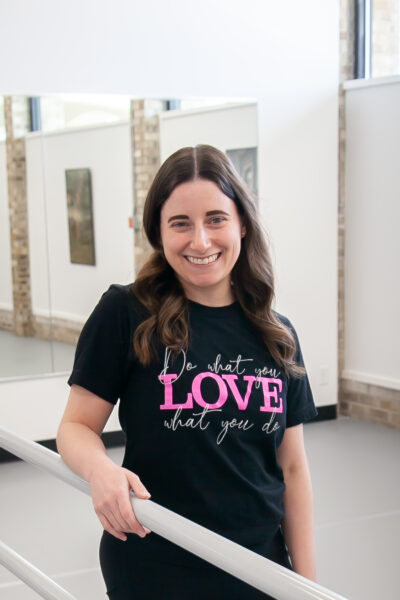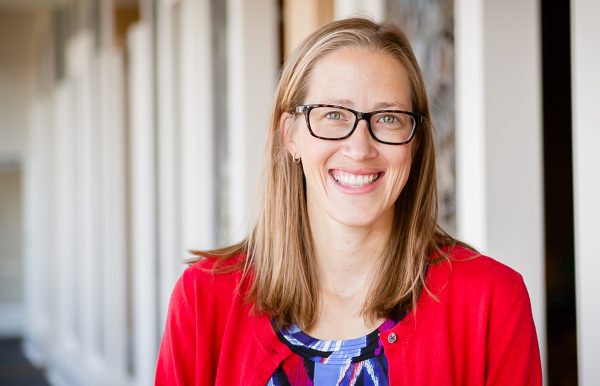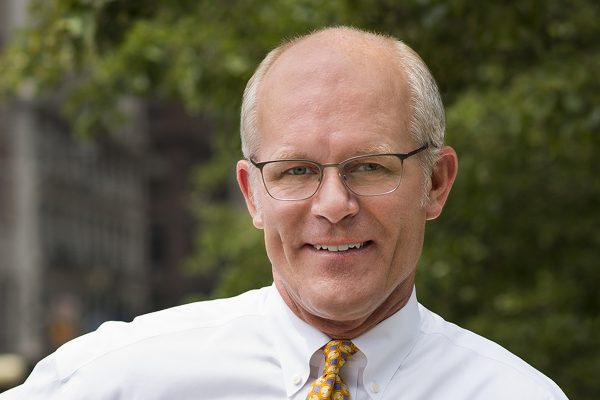A thriving marketplace
He calls it Taco Hector.
Hector Reyna loves to cook. He makes enchiladas and tacos and sandwiches and all sorts of other delicious things. He smiles big when he talks of his creations.
“Some people have Taco Bell,” he said. “We have Taco Hector.”
The “we” he is talking about is Hector and his 8-year-old son, Malachi. They shared a home this past school year after Malachi’s mom ran into trouble with the law.
Hector lives on disability, and admits he’s had quite a bit of trouble in the past. But with Malachi, he’s devoted to “putting my son in the right position for life. He’s such a good kid. With the help of others, I’m doing the best I can.”
The Madison Marketplace plays a role in that.
“It’s like going to the grocery store,” he said while holding onto the reusable bags he was getting ready to fill. “It’s saved me hundreds of dollars. And there’s food here that I can cook into all sorts of great things.”
The Reynas are one of about 40 families who come and shop twice a month at the marketplace. St. Paul people take care of the logistics, hauling, sorting, and hospitality. The River Bend Foodbank supplies the food. Madison provides the space, enthusiasm, and vision.
That vision is to support students by ensuring their families have enough food to eat.
Second and fourth Tuesdays
The morning of the marketplace starts out with a truck from River Bend pulling up to the Madison parking lot at about 9:30 a.m. A crew unloads the truck and hauls the boxes of food down 13 stairs into the basement cafeteria.
The logistics are astonishing. Ordering, tracking, stocking – spreadsheets and lists and routines are the foundation of the operation.
As the day continues on, the rolling shelves come out of storage, the refrigerator is stocked, the fruits and veggies are lined up on tables, canned goods are perfectly placed, and a variety of household goods and personal care items are displayed.
It takes the hands and hearts of a few dozen people to make the Marketplace magic happen.
The doors open to families at 3 p.m.
Jerry Fisher is one of the St. Paul people there to greet them.
Glimpse of heaven on Earth
On a break from stocking shelves, Jerry chuckles when he says one of his most useful skills is the ability to haul boxes up and down stairs. Another important asset is his willingness to give rides to families who don’t have a way to get their groceries home – besides walk or take the bus.
Imagine hauling a week’s worth of groceries home in the drenching heat of summer or the snow-packed cold of winter. That doesn’t happen at the Marketplace, thanks to Jerry and fellow volunteers. They offer up their own vehicles, load groceries into their trunks, and go.
It is during this car time, Jerry said, that volunteers get to know the people who come to the pantry. They talk about their lives, their struggles, their joys, their hopes and dreams. He takes them to apartments, houses, homeless shelters.
“Some are trying to get through school,” he said. “Others are just trying to survive. This is a safe place for them. People feel comfortable here.”
While at the Marketplace, Jerry thinks about the Lord’s Prayer and about what Martin Luther had to say about “may your kingdom come.”
“In fact,” Luther wrote, “God’s kingdom comes on its own without our prayer, but we ask in this prayer that it may also come to us.”
Jerry said of the Marketplace: “This is one of those glimpses of heaven on Earth,” he said. “We’ve got our own little trinity here.”
Foodbank, church, school
For River Bend Foodbank, the partnership at Madison is a new model – one of three such school-based pantries. The idea is if kids are hungry, it makes it nearly impossible to concentrate in school, said Diane Erickson, program director.
In Scott County, for example, there are approximately 23,000 people who are food insecure.
The food offered at the Madison Marketplace is healthy – including produce, she said. But there are treats, too. For example, at Madison, anyone with a birthday coming up can choose a decorated birthday cake to take home.
“The school pantries,” Diane said, “are definitely providing food, but it’s also encouragement and ‘we’re here with you.’”
Sharing in others’ lives is what makes Dana Welser beam. She is the coordinator for St. Paul’s Neighborhood Schools Program, which provides the volunteers.
“We have incredible volunteers who have said yes to serving,” she said, “and it’s a ‘yes’ to an unknown.”
Volunteers are conscious of not judging others. They comfort when a guest is sobbing because the state just took her children away. They know that a cell phone is not a luxury item meant only for the rich – for many it’s the only and least expensive form of communication for a family who moves from place to place.
The food pantry volunteers have learned to observe and listen over the past six months about what works (black bean burgers are a no, cream of mushroom soup is a yes). They have come to understand what works best for when a family is living out of their car.
“We’ve let go of our assumptions,” Dana said.
It’s been challenging to identify the families who need the help, Dana said, but that is where the vision of the school comes in. The vision is that Madison will be a community center, not just a school.
Hungry kids struggle to learn. So teachers use their power of observation to pick up on cues. “The entire school is on free lunch,” Dana said. “People often won’t walk in and say ‘I can’t feed my children.’”
They will say, however, when they are back on their feet again.
One of the greatest joys is when volunteers call to remind a family that it’s pantry day, and they say they don’t need to come anymore because their situation has stabilized, she said.
“It’s a great place to learn grace,” Dana said.
Grocery carts add to the experience
The first time Cindy Bleich volunteered at the Madison Marketplace, she went home exhausted. “But I was so happy,” she said.
She loved this place in the basement of Madison Elementary – so similar to a grocery store with lots of choices and good food for families to take home.
But one thing was missing – grocery carts.
“We were using these bulky utility carts that we couldn’t steer and were hard to use,” she said. Cindy wondered if she could get some grocery carts donated. So she went to work.
She stopped by stores and called and wrote. She woke up in the middle of the night thinking about…grocery carts. A few weeks after she sent a letter to the CEO of HyVee, Cindy’s phone rang.
“Hi. This is Chad from HyVee. Are you the person who wrote the letter about grocery carts for a food pantry?”
Yes, Cindy told Chad. His response? “You can have as many as you’d like. All you have to do is pick them up.”
So one day last month, Matt Spencer from St. Paul went to HyVee, and loaded up 10 grocery carts on a truck. They now live at the Madison Marketplace. “The people who come here can now shop with a little more dignity,” Cindy said.
A church-wide project
The Madison Marketplace has become a church-wide project. The community garden is growing extra produce. VBS kids decorated grocery bags. Youth came to help with loading. Sunday school gathered personal care items. The Women of the ELCA have donated items, the Book Corner donated books, and St. Paul hosts a cooking class for families.
Rethinking Poverty: Seeking to Understand
This year, starting in August, St. Paul will host a monthly, informal conversation about poverty in the community and beyond. Each month will touch on a different topic. It is free and open to the public. Light refreshments will be served.
August: What does poverty look like in our
community? Led by Barb Brunkan
Monday, Aug. 31, 7 p.m., Library Commons




